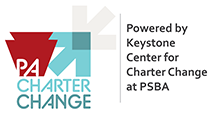Lawrence Feinberg and Rob Gleason | Setting the record straight on cyber charter reform
By Lawrence Feinberg and Rob Gleason, June 14, 2024.
Governor Shapiro and a growing number of legislators from both sides of the aisle are calling for changes to the way cyber charter schools in Pennsylvania are funded and operate. And more importantly, once you know the truth, you should too!
Despite what the ads say, cyber charter schools are not “free.” School districts and their taxpayers are required to pay tuition to the cyber charter school for every student that enrolls. Each of the 500 school districts in the state pay a different rate – up to $26,500 for a non-special education student. Yet, the cyber charter school provides the same education no matter where in the state a student comes from and receives the same funding as brick-and-mortar charter schools despite having only a fraction of the same costs.
When it comes to special education, cyber charters receive a flat, one-size-fits-all tuition payment for the student regardless of the student’s needs which results in millions of dollars in overpayments. Here’s how it works – a student requiring speech therapy as part of their special education program costs the cyber charter an extra $5,000, yet the school district is forced to pay as much as an extra $40,000 for that student. No one is suggesting that these students receive less funding or services. But districts and taxpayers should be paying fairly based on a student’s needs.
Cyber charter schools claim that they only receive 75% of the funding of traditional public schools. But that’s simply not true. In the 2021-22 school year, charter schools received $19,455 per student while school districts received $20,646 per student. That’s only 6.1% less – less than a quarter of what is claimed. When you consider the fact that school districts have numerous expenses and mandates that do not apply to charter schools, such as paying tuition to charter schools (which was a $2.6 billion expense in 2021-22) this difference in funding makes perfect sense.
By no means is this a suggestion that parents and students should not have the option of enrolling in a virtual or online school. Some students may thrive in the virtual setting or may need to take a break from in-person learning for any number of valid reasons. However, nearly every school district in the state offers students that same opportunity, but at a significantly lower cost.
Cyber charter schools have come out strong against any attempts to reform them and it’s easy to understand why. The status quo benefits them greatly and they don’t want to see any changes to the system that has allowed them to amass huge budget reserves, accumulate vast real estate holdings, accrue millions of dollars in profits, and create a powerful lobby in Harrisburg.
For example, the state’s largest cyber charter school reported profits of $111 million and $122 million for the last 2 years on their latest federal organizational tax return and has purchased 29 properties since 2018. Another large cyber charter school maintains an unassigned reserve fund of over $100 million, which is nearly 6 times the recommended level based on the school’s expenses.
Contrary to what some might say, this is not about eliminating or limiting school choice. This is about the effective and efficient use of limited resources for public education. This is also not a new issue. Leaders in traditional public school districts have been begging for changes to the cyber charter funding system since cyber charters were established in 2002. It’s time to look at the facts and when you do, the case for cyber charter reform is clear.
